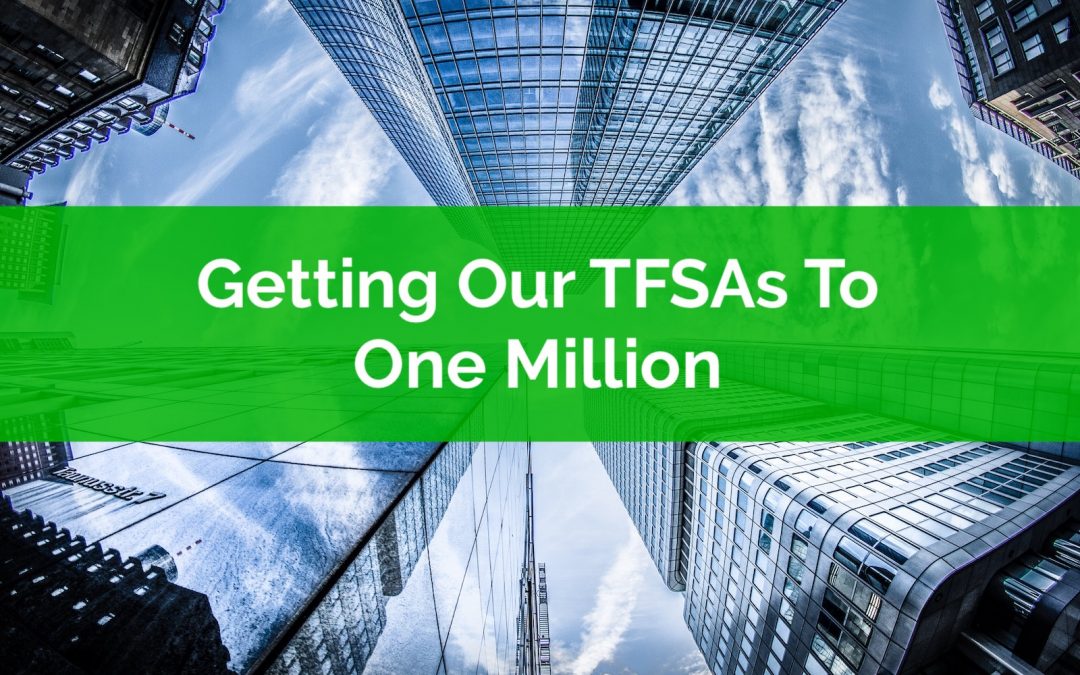“Welcome to the PlanEasy blog! We make personal finance easy.
Thanks for visiting.”
– Owen

When To Take Old Age Security? Should You Delay OAS To Get The Maximum OAS Benefit?
When is the best time to take Old Age Security (OAS)? Should you delay OAS to get the maximum benefit? Or should you take OAS as early as possible?
Old Age Security is a government retirement benefit paid to seniors over the age of 65. Unlike Canada Pension Plan, Old Age Security payments come from government revenue. It has nothing to do with contributions. It has everything to do with how long you’ve been in Canada. And unlike CPP, it can be “clawed back”.
It can also be substantial. Old Age Security is worth over $7,000 per person per year if you receive the maximum benefit. For a couple that’s over $14,000 per year in retirement income. This increases with inflation every 3-months.
And like CPP, OAS payments increase the longer you delay it. The earliest OAS can start is at age 65, but for every month you delay OAS payments the benefit increases by 0.6%. If you choose to delay for a full year your OAS benefits would be 7.2% higher. If you choose to delay the full 5-years to age 70 your OAS benefits would be 36% higher!
Delaying OAS may seem appealing, but should YOU delay OAS to get the maximum OAS benefit in retirement?
Perhaps not, but it depends on your situation.

Getting Our TFSAs To One Million
TFSAs are an amazing tax sheltered account that every Canadian has access to regardless of income. Unlike RRSP contribution room, which is based on employment income, we all get the same amount of TFSA contribution room every year.
The TFSA is a perfect way to save for retirement. In fact, for many young people they are better off starting with their TFSA rather than their RRSP, especially when they’re starting out at a lower income.
At lower income levels the TFSA can provide many advantages versus the RRSP. Namely that future withdrawals aren’t taxed and won’t count towards government benefit claw backs.
There are other benefits to the TFSA too, like if you have a habit of spending your tax refund. If that’s the case then maybe a TFSA contribution is a better idea.
My wife and I have a BIG goal for our TFSAs. Our goal is to grow our combined TFSAs to $1 million by the time we reach early retirement at age 55. This is an ambitious goal, one that we may not meet, but it’s fun to have a BIG financial goal like this. We find it motivating to have BIG financial goals and it gives us something to work toward.
Two years ago I provided an update on our progress to our one million TFSA goal and I think it’s time to do it again. Not just for the accountability but also because it’s good to share how amazing the TFSA is for these kinds of goals.

Common Financial Planning Mistakes We All Can Make
When we do our own financial planning we’re often too close to our own situation to have an objective perspective. We may focus on the wrong problems… or take a narrow view of the potential solutions… or miss potential issues entirely.
One of the benefits of working with a financial planner is that they provide a second set of eyes for your financial plan. Most people are already on the right path, but there are common issues that may end up working against you. A financial planner can help find these common mistakes that may otherwise go unnoticed.
Financial planning isn’t rocket science, it’s something that can be done on your own. The math itself isn’t terribly difficult, and there are tools available online to help, but one of the major downfalls of the DIY approach is that we can be somewhat oblivious to our own personal biases.
Basically, we’re too close to our own financial situation to be entirely unbiased (This goes for financial planners too!) There are certain financial planning mistakes that we all tend to make if we’re not careful.
These mistakes can lead to potential issues over time. These issues can create more risk, or decrease investment return, or increase taxes, or create a higher risk of running out of money in retirement.
These mistakes are quite common and identifying these potential issues is the first step to creating a stronger financial plan.

Owen Winkelmolen
Advice-only financial planner, CFP, and founder of PlanEasy.ca
“Welcome to the PlanEasy blog! We make personal finance easy.
Thanks for visiting.”
– Owen
New blog posts weekly!
Tax planning, benefit optimization, budgeting, family planning, retirement planning and more...

When To Take Old Age Security? Should You Delay OAS To Get The Maximum OAS Benefit?
When is the best time to take Old Age Security (OAS)? Should you delay OAS to get the maximum benefit? Or should you take OAS as early as possible?
Old Age Security is a government retirement benefit paid to seniors over the age of 65. Unlike Canada Pension Plan, Old Age Security payments come from government revenue. It has nothing to do with contributions. It has everything to do with how long you’ve been in Canada. And unlike CPP, it can be “clawed back”.
It can also be substantial. Old Age Security is worth over $7,000 per person per year if you receive the maximum benefit. For a couple that’s over $14,000 per year in retirement income. This increases with inflation every 3-months.
And like CPP, OAS payments increase the longer you delay it. The earliest OAS can start is at age 65, but for every month you delay OAS payments the benefit increases by 0.6%. If you choose to delay for a full year your OAS benefits would be 7.2% higher. If you choose to delay the full 5-years to age 70 your OAS benefits would be 36% higher!
Delaying OAS may seem appealing, but should YOU delay OAS to get the maximum OAS benefit in retirement?
Perhaps not, but it depends on your situation.

Getting Our TFSAs To One Million
TFSAs are an amazing tax sheltered account that every Canadian has access to regardless of income. Unlike RRSP contribution room, which is based on employment income, we all get the same amount of TFSA contribution room every year.
The TFSA is a perfect way to save for retirement. In fact, for many young people they are better off starting with their TFSA rather than their RRSP, especially when they’re starting out at a lower income.
At lower income levels the TFSA can provide many advantages versus the RRSP. Namely that future withdrawals aren’t taxed and won’t count towards government benefit claw backs.
There are other benefits to the TFSA too, like if you have a habit of spending your tax refund. If that’s the case then maybe a TFSA contribution is a better idea.
My wife and I have a BIG goal for our TFSAs. Our goal is to grow our combined TFSAs to $1 million by the time we reach early retirement at age 55. This is an ambitious goal, one that we may not meet, but it’s fun to have a BIG financial goal like this. We find it motivating to have BIG financial goals and it gives us something to work toward.
Two years ago I provided an update on our progress to our one million TFSA goal and I think it’s time to do it again. Not just for the accountability but also because it’s good to share how amazing the TFSA is for these kinds of goals.

Common Financial Planning Mistakes We All Can Make
When we do our own financial planning we’re often too close to our own situation to have an objective perspective. We may focus on the wrong problems… or take a narrow view of the potential solutions… or miss potential issues entirely.
One of the benefits of working with a financial planner is that they provide a second set of eyes for your financial plan. Most people are already on the right path, but there are common issues that may end up working against you. A financial planner can help find these common mistakes that may otherwise go unnoticed.
Financial planning isn’t rocket science, it’s something that can be done on your own. The math itself isn’t terribly difficult, and there are tools available online to help, but one of the major downfalls of the DIY approach is that we can be somewhat oblivious to our own personal biases.
Basically, we’re too close to our own financial situation to be entirely unbiased (This goes for financial planners too!) There are certain financial planning mistakes that we all tend to make if we’re not careful.
These mistakes can lead to potential issues over time. These issues can create more risk, or decrease investment return, or increase taxes, or create a higher risk of running out of money in retirement.
These mistakes are quite common and identifying these potential issues is the first step to creating a stronger financial plan.
Join over 250,000 people reading PlanEasy.ca each year. New blog posts weekly!
Tax planning, benefit optimization, budgeting, family planning, retirement planning and more...
Join over 250,000 people reading PlanEasy.ca each year. New blog posts weekly!
Tax planning, benefit optimization, budgeting, family planning, retirement planning and more...
